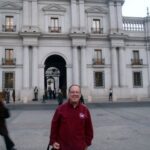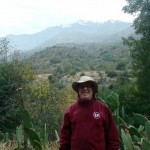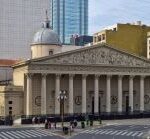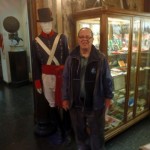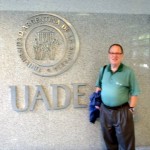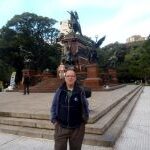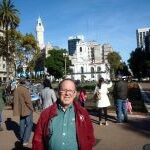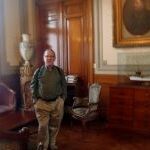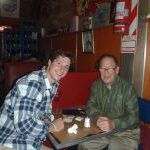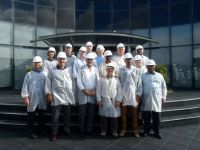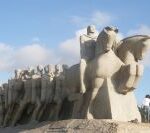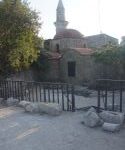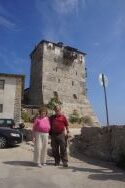Goodbye to my new best friends
My new best friends are in the airport, on their way back to the states. I’m in an airport hotel, awaiting a flight to Easter Island, half way to Papete–in the middle of nowhere.

Today, though, we were somewhere–along the Pacific Ocean. We visited two sister cities, Vina del mar, a resort in the summer, and Valparaiso, one of the best harbors on the Pacific in Latin America. We got to the beach, which for all the world resembled San Diego, with the sea lions cavorting (the males remind me of teen age boys showing off) and snorting, with cormorants spreading and drying their wings, and with gulls dive bombing like something out of a bad World War II movie (fortunately, we missed their “bombs”). The twin cities of about 500,000 swell during the summer (January is the month Argentina vacations, while February is the school break for Chile), but we had the beach to ourselves–or so we thought until an enormous wave reclaimed its rights over those too close to it.
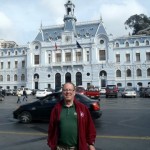
The real prize, though, is Valparaiso, a real “city on a hill.” It’s a primary port on the Pacific side, and before the construction of the Panama Canal, was one of the most important ports in the world. Even today, it bears some of the palaces that were built with successful trading, and is the home of the naval war college and the Chilean fleet. The admiralty building on the main square will be the scene of a major holiday, commemorating the valiant (but futile) effort of a smaller Chilean boat to defeat a Peruvian vessel on May 21, 1882 (I think that was the year). There was already a lot of gold braid in town, but it is also the day when the President of Chile delivers the “State of the Union” speech at the Parliament building, which is now in Valparaiso. The city’s hills once accommodated 46 funiculi (?), but now there are only 4, and the city buses are the only trolley buses left in Chile. The homes are colorful, but the guide insisted that it’s a less expensive, less sophisticated city than Santiago.
One of Chile’s biggest exports is wine, so it was no surprise that our last 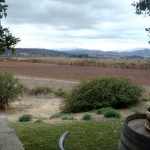 dinner was at a vineyard on the way back to the airport. What was a little surprising was that the owners were Americans who live in California, but are the fifth generation to own the property. Founding father CJ Kingston came to Chile when the upper peninsula in Michigan ran out of copper (Copper Harbor anyone?) , prospected for gold, copper, and wound up with a cattle ranch. The latest generation came up with a strategy to develop a vineyard, and as part of the plan, to develop some wines to show the excellence of the grapes. The Kingstons purchased the technology from the US, which was apparently more advanced, and organized the smaller growers into an association to solve mutual problems, not a common practice in Chile. They’re spending this year here, but have a distribution network online (oldcorralcllub.com for those who want to sample). The owner explained the history, the making of wine, and served lunch with samples. He’s an Eagle Scout so we had a nice visit about Scouting.
dinner was at a vineyard on the way back to the airport. What was a little surprising was that the owners were Americans who live in California, but are the fifth generation to own the property. Founding father CJ Kingston came to Chile when the upper peninsula in Michigan ran out of copper (Copper Harbor anyone?) , prospected for gold, copper, and wound up with a cattle ranch. The latest generation came up with a strategy to develop a vineyard, and as part of the plan, to develop some wines to show the excellence of the grapes. The Kingstons purchased the technology from the US, which was apparently more advanced, and organized the smaller growers into an association to solve mutual problems, not a common practice in Chile. They’re spending this year here, but have a distribution network online (oldcorralcllub.com for those who want to sample). The owner explained the history, the making of wine, and served lunch with samples. He’s an Eagle Scout so we had a nice visit about Scouting.
It seems like yesterday that I was sitting in the airport in Santiago meeting the faculty members who would be my constant companions for the past 8 days. I enjoyed meeting them, learning about and from them, and, in my best Chinese, wish them yi lu ping an–a peaceful journey.
